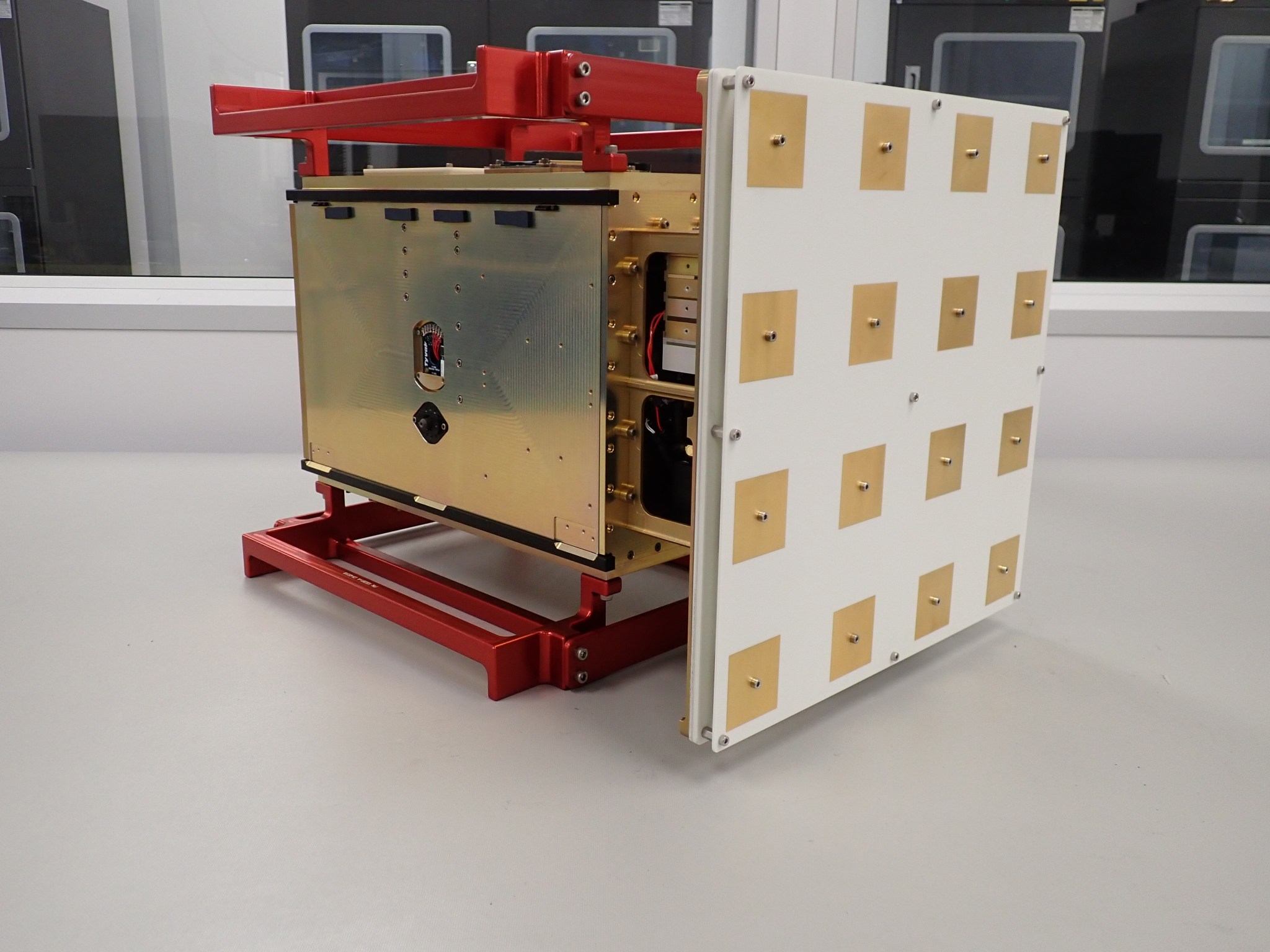
Small spacecraft will play a big role in lunar exploration, including a Moon-bound CubeSat launching later this year.
The Cislunar Autonomous Positioning System Technology Operations and Navigation Experiment, or CAPSTONE, mission team is making the final preparations for the spacecraft that will make CubeSat history over a series of technological and operational firsts for the small platform.

Planned for launch in 2021, CAPSTONE will fly in cislunar space – the orbital area near and around the Moon – and demonstrate an innovative spacecraft-to-spacecraft navigation technology. CAPSTONE also will test out a unique lunar orbit that Gateway will use as the Moon-orbiting outpost for NASA’s Artemis program.
CAPSTONE will use a hydrazine-fueled propulsion system during most of its three- to four- month journey to the Moon. This line of propulsion system, developed by Stellar Exploration Inc. of San Luis Obispo, California, is a recently developed and flight-proven system developed for use on CubeSats. The team recently completed a fueling and final test-fire of CAPSTONE’s propulsion system at Stellar Exploration’s facility and is integrating the system with the spacecraft.
But before CAPSTONE fires its own thrusters, Rocket Lab’s Electron rocket will launch the mission from Earth carrying the CAPSTONE spacecraft integrated onto its new Lunar Photon upper stage/spacecraft. For the mission, Lunar Photon will serve as an upper stage to get CAPSTONE to a highly efficient ballistic lunar transfer trajectory designed by Advanced Space of Colorado. About seven days after launch, after a series of orbit raising maneuvers and the final trans-lunar injection burn, Photon will release CAPSTONE. After the deep space, low energy transfer, the CAPSTONE spacecraft will insert itself into the near rectilinear halo orbit. At the same time, Lunar Photon will continue to a separate orbit for its safe disposal.
The CAPSTONE spacecraft is fast approaching completion. Near-term plans include continued integration, testing, and international shipment of the spacecraft in late September. Rocket Lab has identified its Launch Complex 1 in New Zealand as the CAPSTONE launch site. Onsite launch preparations will include checkouts and fueling of the CAPSTONE spacecraft and its subsequent integration with Photon.

In May 2021, New Zealand signed the Artemis Accords with NASA – a set of principles that reinforce and implement the 1967 Outer Space Treaty. The agency aims to assemble the broadest and most diverse international space exploration coalition in history. To date, 12 nations have signed the accords, and conversations with other nations are ongoing.
CAPSTONE is commercially owned and operated by Advanced Space in Westminster, Colorado. It represents an innovative collaboration between NASA and industry to provide rapid results and feedback to inform future exploration and science missions. Tyvak Nano-Satellite Systems of Irvine, California, is building the microwave oven-sized 12-unit CubeSat platform.
NASA’s Small Spacecraft Technology program within the agency’s Space Technology Mission Directorate funds the demonstration mission. The program is based at NASA’s Ames Research Center in California’s Silicon Valley. Advanced Exploration Systems (AES) within NASA’s Human Exploration and Operations Mission Directorate funds the launch and supports mission operations. The Launch Services Program at NASA’s Kennedy Space Center in Florida manages the launch service.
For news media:
Members of the news media interested in covering this topic should reach out to the NASA Ames newsroom.




























